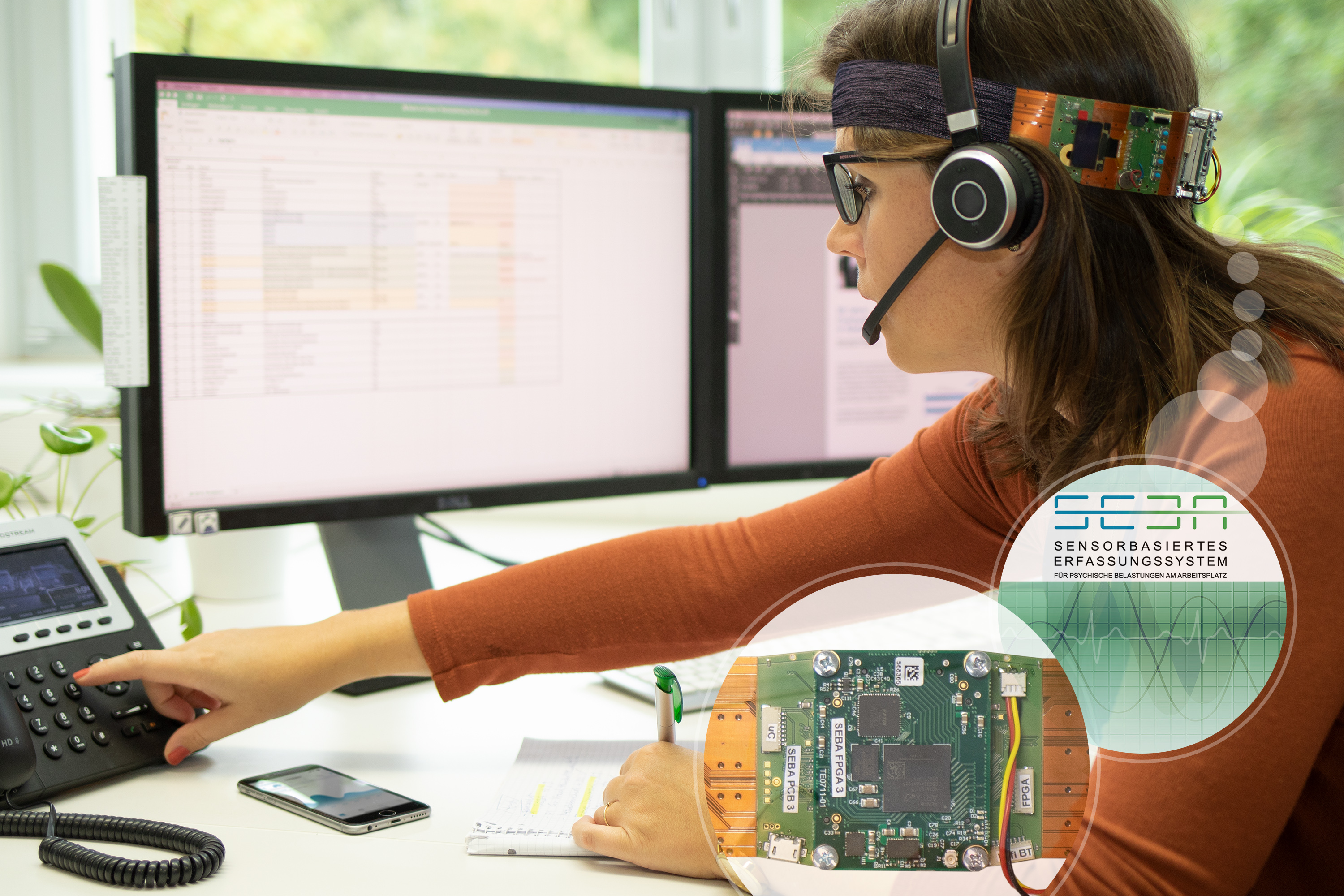Combatting stress with a headband
Stress at the workplace can produce a wide range of symptoms and has previously only been describable in subjective terms.

Stress at the workplace can produce a wide range of symptoms and has previously only been describable in subjective terms. Headache after a day at the office? Exhausted from all the noise in the shop? Stress as a possible cause is now becoming objectively measurable. Together with its project partners, the University of Rostock is developing a sensor-equipped headband that will form an objective basis for workplace improvements.
The Agency for Safety and Health at Work (OSHA) estimates that some 40 million EU workers are affected by workplace stress. "More than one in five employees sees their health endangered by work-related stress," explained Dr. Gerald Bieber from the Fraunhofer Institute for Computer Graphics Research IGD in Rostock. “The results are high blood pressure or heart conditions, but also psychiatric disorders such as depression. Then workers are totally absent for weeks at a time. The impact on businesses is enormous.” The solution: a system for detecting sources of stress in time and improving working conditions.
Until now, workplaces have been analyzed for mental stress through questionnaires and meetings. “But those are subjective assessments by an individual, which can be incomplete or even incorrect,” said Dr. Bieber. “We need objective metrics.” This is why the project partners developed a headband that records various physical responses, including blinking frequency, pulse and breathing rate, oxygen saturation, skin conductance and even brainwaves. It will also register ambient parameters, such as noise level and light exposure. Stressors such as noise, drafts or light affect everyone differently. “LED lights are becoming more common and their brightness varies greatly in a very quick rhythm,” explained Dr. Bieber. “We aren’t consciously aware of it, but our brain still registers the stimulus. If you look at this light on a time-loop, you’ll see that its intensity often drops by up to half or it even goes out altogether before going back up. That’s taxing.” Even fluorescent tubes have this effect.
To create a way to remedy this situation, Project SEBA was started to create a sensor-based assessment system for mental stress and strain in the workplace. The measuring system should be flexible, wearable without being a nuisance even during physical activity and still provide reliable data. The result is a headband packed with sensors and circuits. It is designed to be worn by workers for about four hours in order to obtain reliable data, with each person’s initial state being recorded as the baseline. The entire process is controlled and visualized by smartphone, through which subjective impressions can also be entered and included in the analysis. “It’s important to our research in order to continue improving the system,” said Dr. Bieber.
The first field tests will begin at the end of this year at a handful of companies experiencing a high level of psychological strain due to a large number of employees being out sick. However, the meter is not intended to go to businesses themselves later on, rather to external occupational health management (OHM) consultants who are currently conducting the conventional workplace analyses. “The data from our measurements naturally will not be disclosed to employers,” ensured Dr. Bieber. “The ambient data will go to consultants so changes can be made at the workplace. And only when the workers give their consent will their personal measurements be included.” As a result of this analysis, certain factors can be modified depending on how a worker responds to the stressors. “It would be simple to replace a light or set up a partition to block out noise in order to relieve the strain on workers.”
The SEBA project is funded by the Federal Ministry of Economics and Technology. Project partners are the company Hamburg Applications MES, which develops the hardware and firmware, the Hahn-Schickard-Gesellschaft from Villingen-Schwenningen, which deals with energy optimization, the company Healthcare X.0 from Potsdam, which develops the software and specializes in data protection, and last but not least the University of Rostock, which covers the psychological part.
Previously, IGD was working mostly with pattern recognition from images. Now, as Dr. Bieber explained, the same math is being applied to recognize patterns from sensor signals.
The headband will be presented at Medica, the world’s largest healthcare trade fair, which is being held in Düsseldorf in November. “There has yet to be any application like this in occupational health management,” said Dr. Bieber. The mobile meter has already drawn the interest of specialists in other fields, such as doctors who want to treat phobias or sleep disorders.
 Fraunhofer Institute for Computer Graphics Research IGD
Fraunhofer Institute for Computer Graphics Research IGD